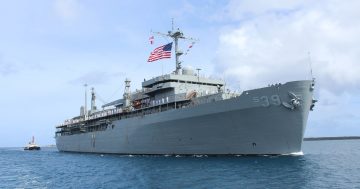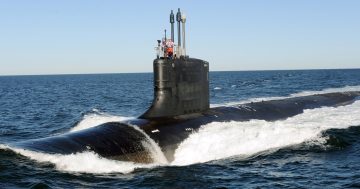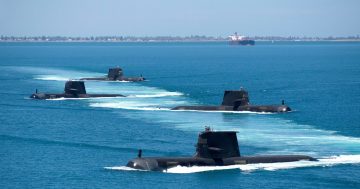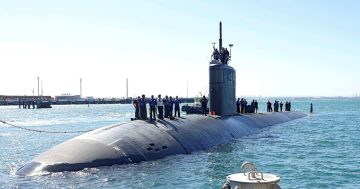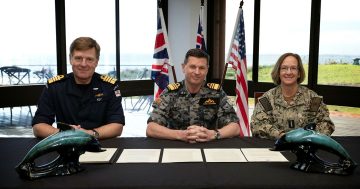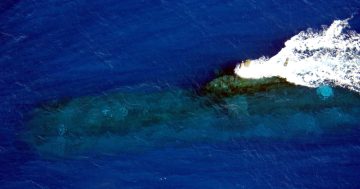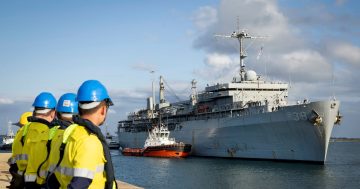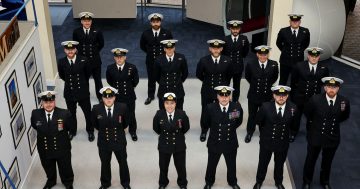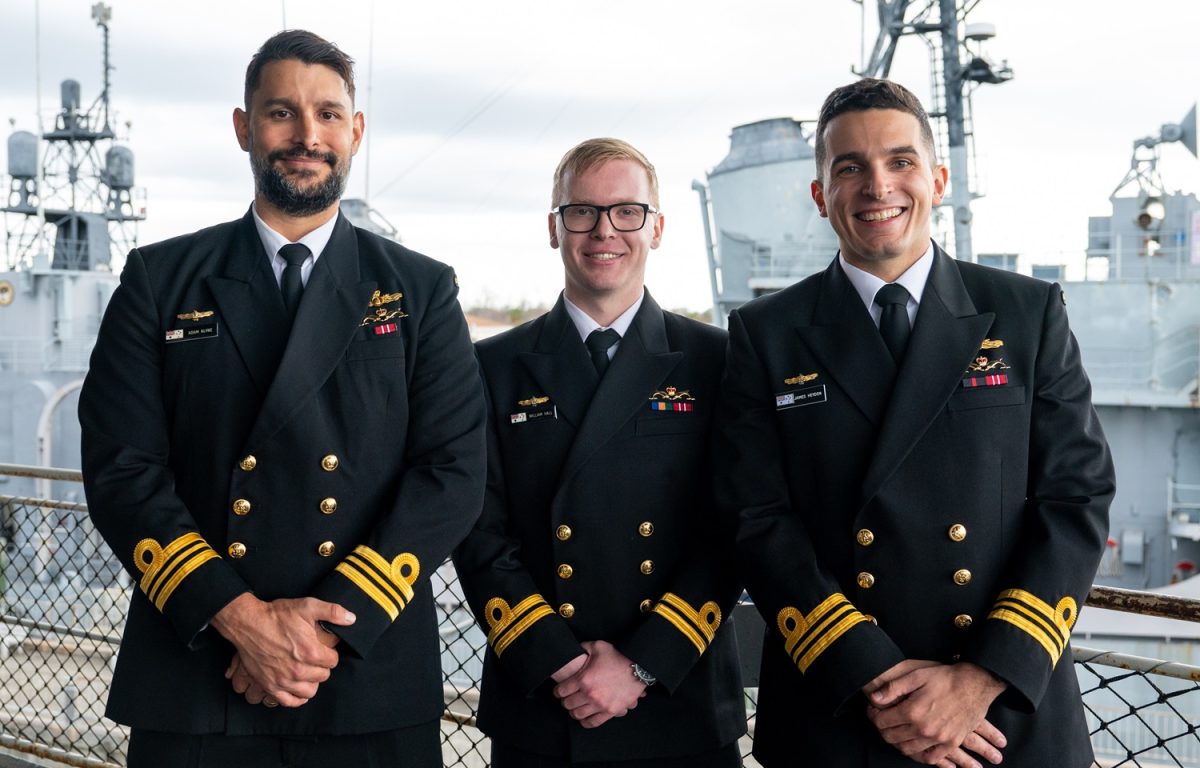
Royal Australian Navy LTCDR Adam Klyne, LT William Hall and LTCDR James Heydon have graduated from the US Navy’s Nuclear Power Training Unit in Charleston, South Carolina. Photo: US Navy via DVIDS.
The Royal Australian Navy’s plan to build a new skilled workforce for its planned nuclear-powered submarines has started with the graduation on 12 January of three officers from the US Navy’s prestigious Nuclear Power Training Unit (NPTU).
The NPTU trains sailors and civilians for shipboard nuclear power plant operation and maintenance of surface ships and submarines in the US Navy’s nuclear fleet. Since it was established in 1989, the NPTU has trained more than 1000 US Navy sailors each year and plans to train 37,000 more sailors over the next 20 years.
“NPTU is where our nuclear operators put the knowledge and theories they learned in power school into actual power plant operation and watch standing capabilities,” Director of the US Navy’s Naval Nuclear Propulsion Program Admiral Bill Houston told DVIDS.
“It’s here that our students learn to safely and competently operate the plant in both normal and potential casualty situations.”
The US Navy operates about 90 nuclear-powered vessels, including 11 aircraft carriers, two moored training ships (MTS), and more than 70 Virginia, Seawolf and Los Angeles attack submarines (SSN) and Ohio class ballistic and cruise missile submarines (SSBN/SSGN).
The RAN’s Lieutenant Commander James Heydon, Lieutenant Commander Adam Klyne and Lieutenant William Hall started at NPTU straight after finishing the prerequisite Nuclear Power School in July 2023 and have become the first cadre of Royal Australian Navy personnel to go through one of the US’s most rigorous and demanding training pipelines.
The Nuclear Power School trains sailors in the science and engineering fundamental to the design, operation and maintenance of naval nuclear propulsion plants. The topics studied include mathematics, nuclear physics, health physics, reactor principles, material science and metallurgy, electrical power theory and generating equipment, thermodynamics, chemistry and nuclear reactor technology.
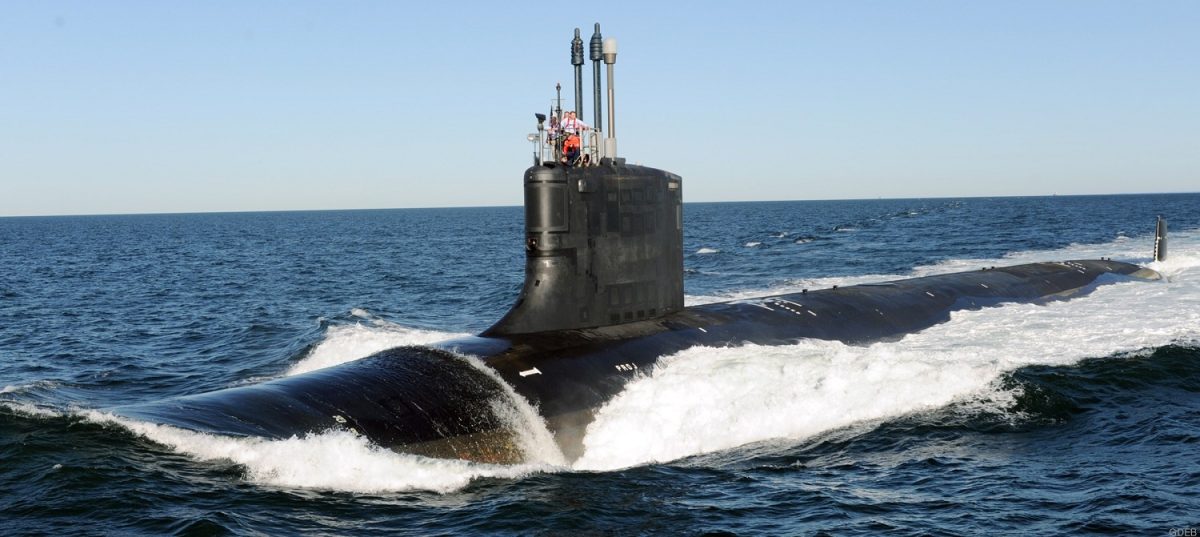
The US Navy operates about 90 nuclear-powered vessels, including about 70 submarines. Photo: US Navy.
The Australian graduates will now put their training into practice on exchange postings on US Navy nuclear-powered vessels. Their next stop will be the US Navy’s Submarine Officer Basic Course (SOBC) in Groton, Connecticut, where they will undergo the same training as US Navy officers entering the submarine force. After completing SOBC, they will be assigned to a US Navy Virginia class submarine.
“I was really looking forward to putting the concepts and theories that we learned at power school into operation at the prototype training,” LTCDR Klyne said.
“Operating a nuclear reactor was thrilling, humbling, and allowed us to get that hands-on experience we need to safely operate the Royal Australian Navy’s future SSNs.”
Under the AUKUS Pillar 1 construct with the US and UK, Australia plans to buy at least three Virginia class SSNs in the 2030s before work starts on building a new class of SSN-AUKUS SSNs, which will enter service in the early 2040s.
The training of Australian personnel in US Navy nuclear training facilities and then exchange postings on US Navy vessels will ensure a cadre of suitably qualified personnel is in place in time for the arrival of Australia’s first Virginia boat.
Other elements of AUKUS Pillar 1 include visits of US- and UK-flagged submarines to HMAS Stirling in Western Australia, where maintenance will be performed on them by a workforce that includes Australian naval and industry personnel.
From 2027, these visits will become more frequent and longer-lasting to accelerate the development of Australia’s workforce, infrastructure, and regulatory system as part of the Submarine Rotational Force – West (SRF-W).
Original Article published by Andrew McLaughlin on Riotact.


